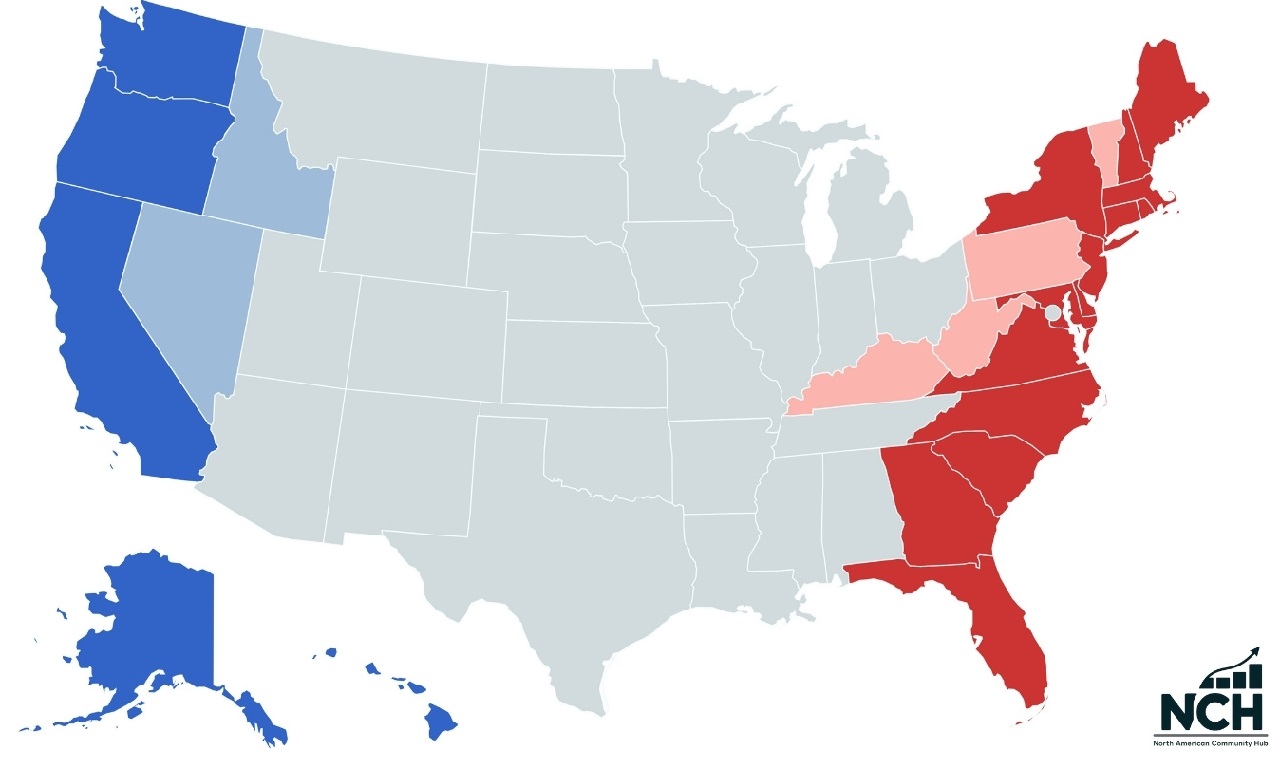The states on the West Coast face the Pacific Ocean, where cliffs, deserts, and tall forests meet cities built on energy and innovation.
On the other hand, the states on the East Coast of the United States line the Atlantic Ocean, filled with ports, universities, and the country’s earliest history.
Both regions hold different ways of life, yet stay tied together by trade, travel, and culture.
Keep reading for a clear guide to every state along both sides and what sets them apart.
States on the West Coast of the United States
The shoreline covers everything from desert cliffs to icy harbors, linking major cities with some of the most dramatic natural spaces in North America.
The geography and economy of the region form a balance between progress and raw landscape, between fast-growing industries and untouched wilderness.
When people ask how many states are on the West Coast, the answer depends on the definition.
In the strict sense, there are three mainland states: California, Oregon, and Washington.
A wider definition includes Alaska and Hawaii, two Pacific territories that play vital roles in defense, trade, and travel.
Together, they form five states on the west coast of the United States.
Full List of West Coast States
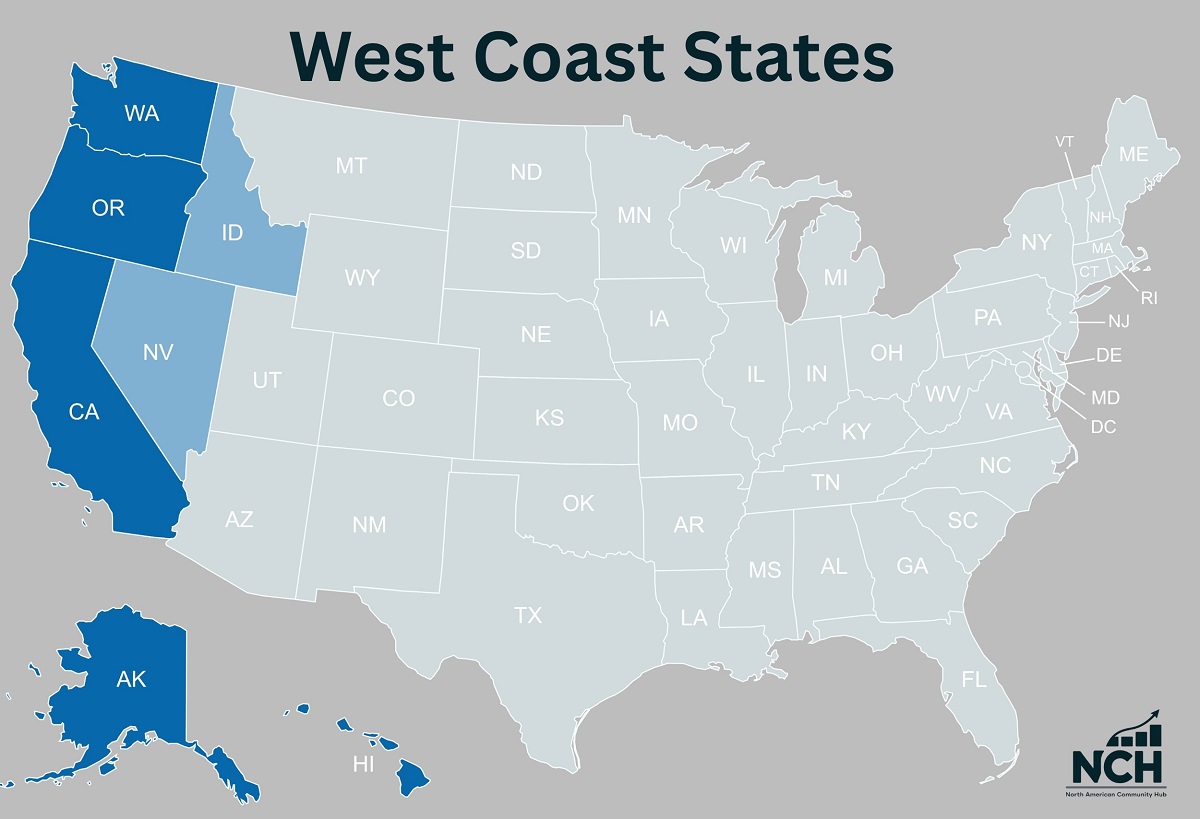
- California: The largest coastal state, home to Los Angeles, San Francisco, and San Diego. It leads in technology, entertainment, and agriculture while offering vast coastlines that attract millions of visitors each year.
- Oregon: Known for deep forests, rivers, and a rugged coastline. It mixes industry with environmental care and maintains a steady reputation for outdoor life and clean energy.
- Washington: The northernmost of the three mainland coastal states. It holds Seattle, a hub for technology, global shipping, and innovation. The state also includes active volcanoes and strong Pacific trade routes.
- Alaska: The largest state in size and the least populated. It dominates the far northwest with ports on the Pacific, a powerful fishing sector, and access to Arctic resources.
- Hawaii: A chain of volcanic islands in the Pacific Ocean. Known for warm weather and tourism, it remains a center for Pacific culture and United States naval presence.
The West Coast of the United States offers extremes of climate, from the frozen waters of Alaska to the dry valleys of Southern California. Earthquakes, wildfires, and coastal storms test its resilience, yet every state continues to grow and adapt.
Fun Fact: Hawaii is the happiest state in the United States
States Near the West Coast without Direct Ocean Access
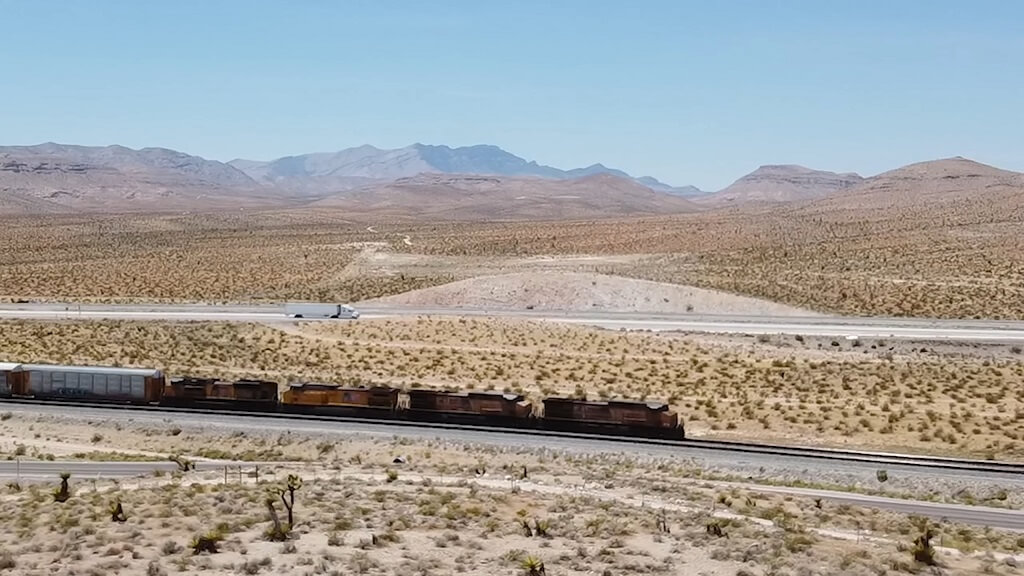
Some areas are part of the western region but do not touch the Pacific Ocean. Nevada and Idaho are the two most closely linked.
- Nevada depends on Pacific trade routes through California’s ports. Most goods move between Los Angeles, Long Beach, and Las Vegas by highway or rail. The state’s economy connects directly to coastal commerce even without a shoreline.
- Idaho connects to Oregon and Washington through mountain passes and river systems that reach toward the Pacific. The state uses those transport routes for exports in agriculture, lumber, and manufacturing.
States on the East Coast of the United States
The states on the East Coast of the United States border the Atlantic Ocean and cover a stretch of land rich in history, culture, and economic power.
The coastline begins in the far northeast at the rocky shores of Maine and runs down to the warm beaches of Florida.
Along this route stand major cities, historic landmarks, and ports that connect the country to Europe, Africa, and the Caribbean.
Full List of East Coast States
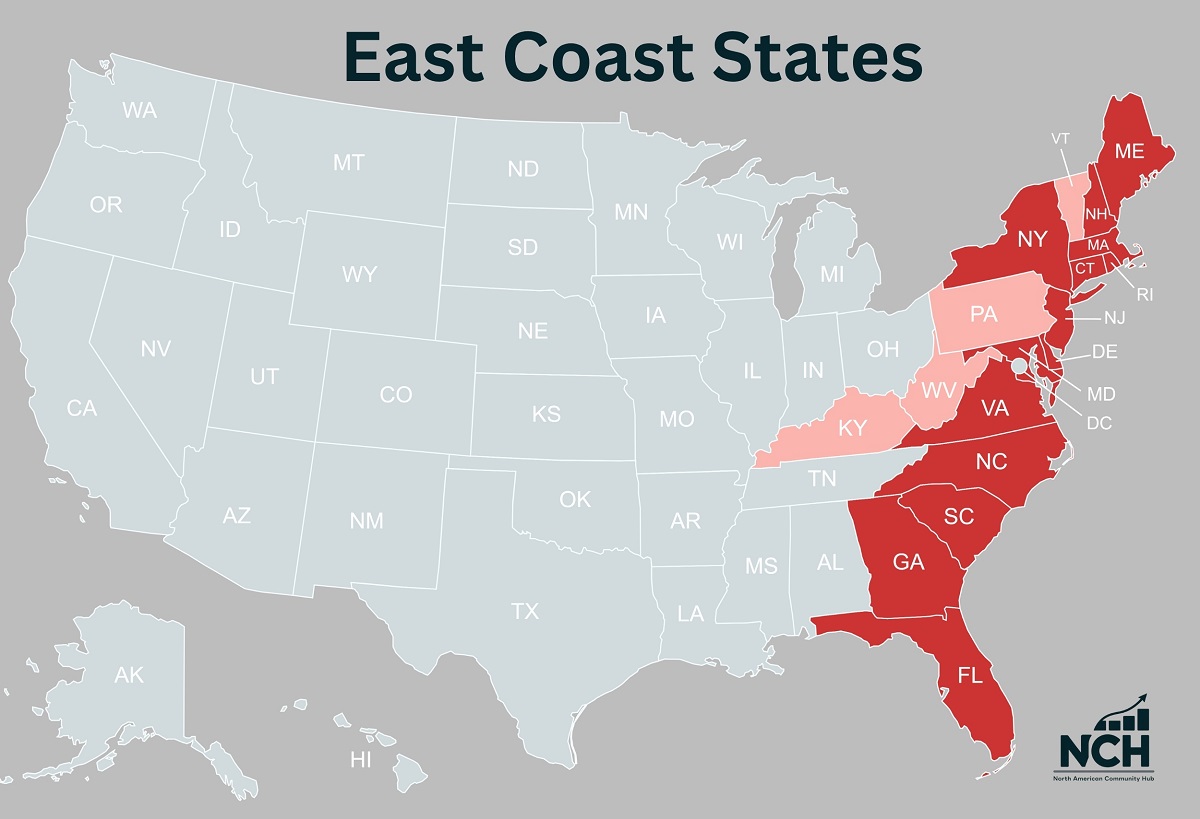
- Maine: The northeastern corner of the country, famous for its lighthouses, forests, and seafood industry.
- New Hampshire: Short but important coastline, known for small ports and mountain views.
- Massachusetts: Home to Boston, one of the oldest cities in America, and a hub of education and history.
- Rhode Island: The smallest state in size, with scenic bays and a long maritime tradition.
- Connecticut: Combines suburban life, business centers, and coastal towns along Long Island Sound.
- New York: Holds New York City, the country’s largest metropolitan area, along with a rich mix of culture and finance.
- New Jersey: Famous for its beaches, dense population, and close economic ties to New York and Philadelphia.
- Delaware: Known for business-friendly laws, beaches, and early colonial heritage.
- Maryland: Defined by the Chesapeake Bay, seafood, and proximity to the nation’s capital.
- Virginia: A bridge between North and South, with military bases and early American landmarks.
- North Carolina: Long Atlantic coastline with growing cities and the Outer Banks known for tourism.
- South Carolina: Historic ports like Charleston and long sandy beaches along the Atlantic.
- Georgia: Centers on Savannah and a busy port network that drives trade and industry.
- Florida: The southernmost Atlantic state, with tropical weather, tourism, and international trade.
Each of the states on the East Coast of the United States has a distinct identity but shares a connection through the Atlantic.
Northern states hold deep colonial roots and colder climates. Central states balance industry and politics. Southern states combine warm weather with tourism and agriculture.
States Near the East Coast without Direct Ocean Access
Some states sit close to the Atlantic Ocean but have no direct coastline.
Vermont
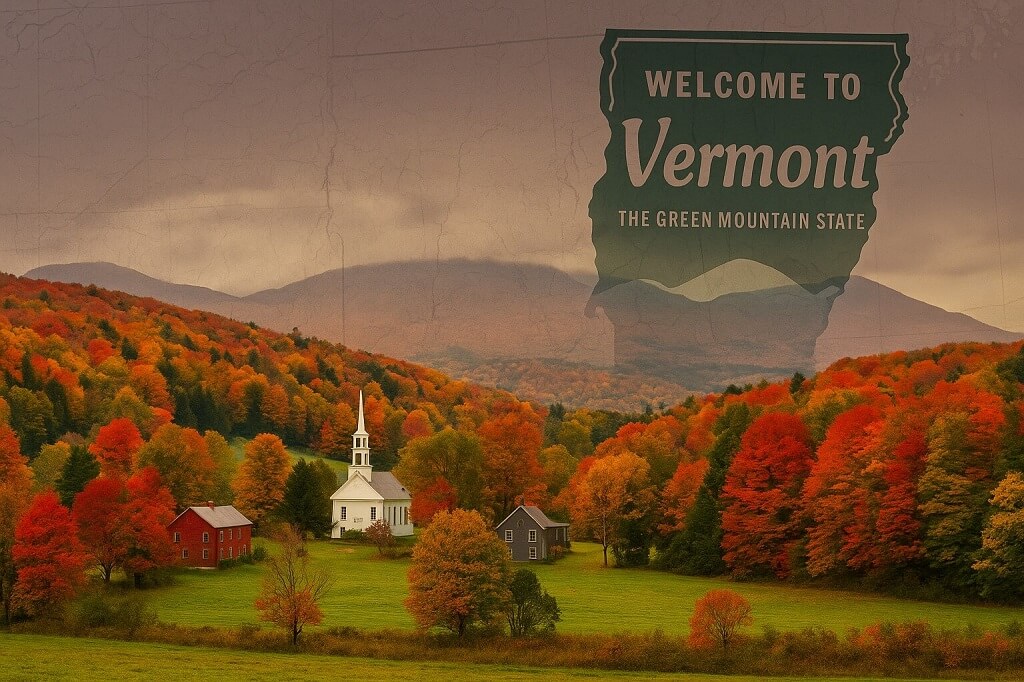
Located between New York and New Hampshire, Vermont lies only a short distance from the Atlantic corridor.
It relies on shipping and business links through Boston and New York City. The state’s goods, including timber and dairy, reach the ocean through those nearby ports.
Pennsylvania
Although landlocked, Pennsylvania connects to the Atlantic through the Delaware River.
Philadelphia serves as one of the country’s key inland ports, providing direct access to the coast for industry, manufacturing, and international trade.
West Virginia
Positioned in the Appalachian region, West Virginia borders Virginia, which provides its link to the Atlantic.
Its coal and energy exports move east through railway and highway systems that lead to coastal terminals.
It is ranked first among the US states with the lowest cost of living.
Kentucky
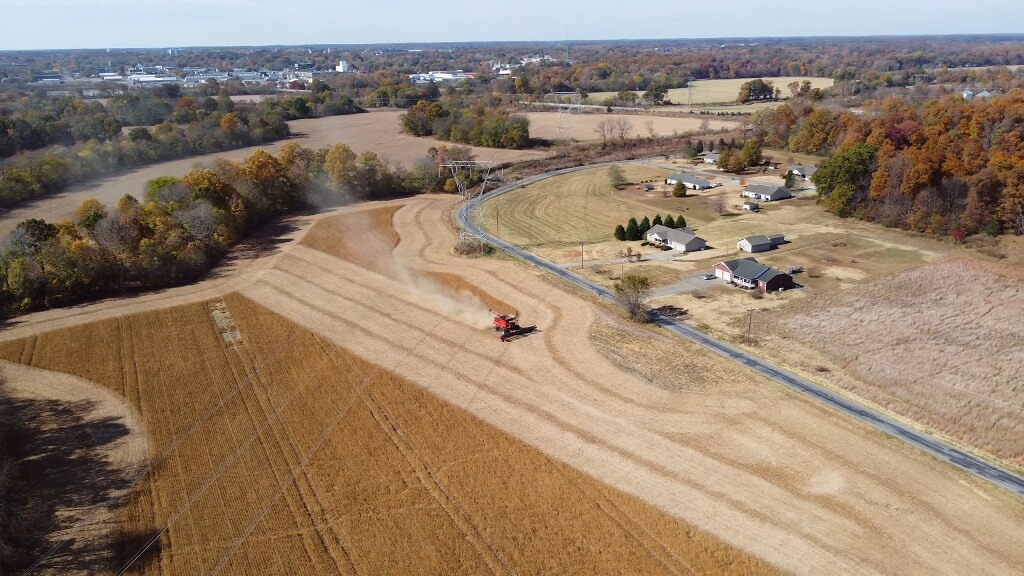
Further inland, Kentucky stays connected to the Atlantic economy through highways and rail lines that cross Virginia and Tennessee.
The agricultural and industrial goods often move through Atlantic ports for global distribution.
Comparison Between States on the West Coast and the East Coast
The states on the West Coast and East Coast differ in almost every measurable way. Geography, climate, population density, and history all create separate regional identities that define how people live and work.
Geography and Climate
| Feature | West Coast | East Coast |
|---|---|---|
| Ocean | Pacific Ocean | Atlantic Ocean |
| Terrain | Mountains, deserts, cliffs, forests | Plains, rolling hills, beaches |
| Earthquakes | Common (San Andreas Fault, Cascadia Zone) | Rare |
| Hurricanes | Rare | Frequent (Atlantic Hurricane Belt) |
| Volcanoes | Active (Mount St. Helens, Mount Rainier) | Minimal activity |
| Climate Range | Arctic cold in Alaska to desert heat in California | Cold winters in the north to tropical heat in Florida |
Population and Urban Centers
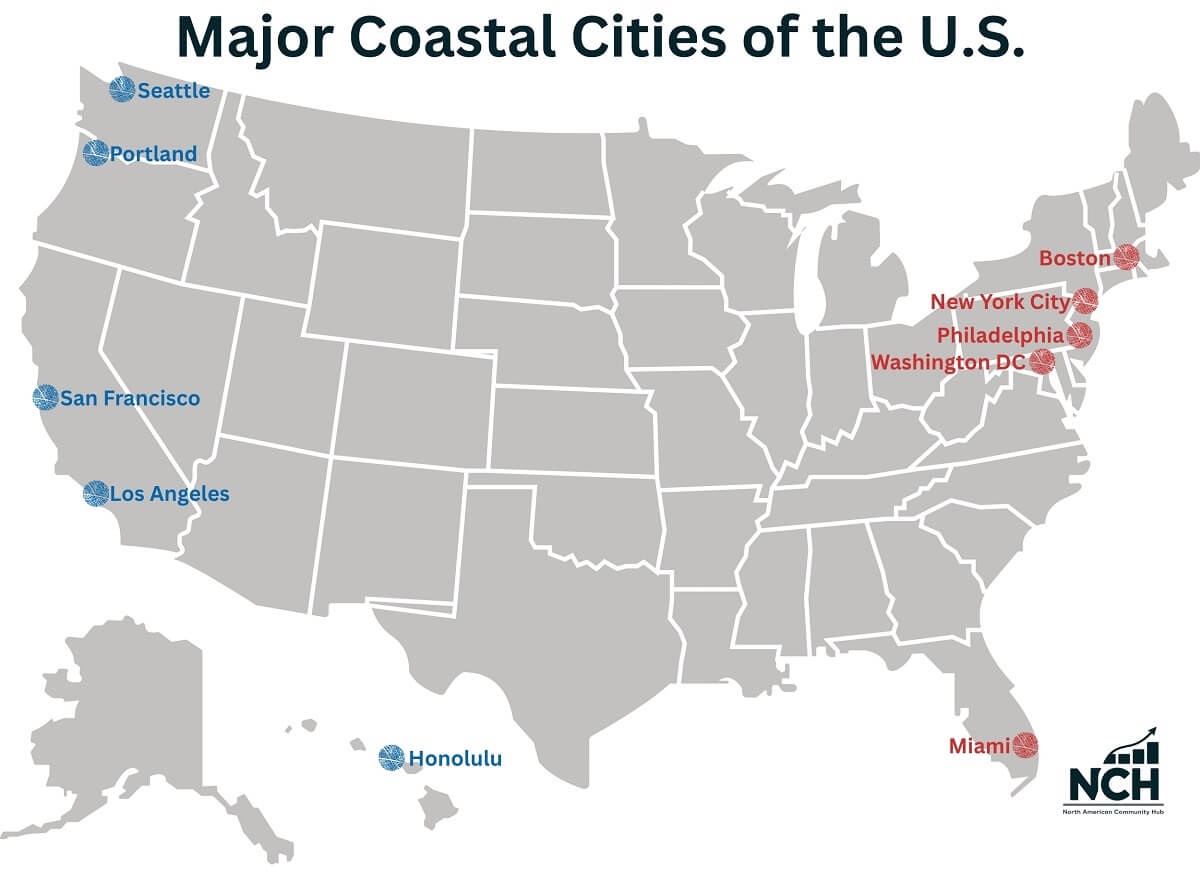
| Metric | West Coast | East Coast |
|---|---|---|
| Total States | 5 | 14 |
| Major Cities | Los Angeles, Seattle, San Francisco, Portland, Honolulu | New York City, Boston, Washington DC, Miami, Philadelphia |
| Total Population | 80 million | 120 million |
| Density | Moderate, spread along the coastline | High, clustered in major metro areas |
Economy and Industry
| Sector | West Coast | East Coast |
|---|---|---|
| Leading Industries | Technology, film, renewable energy, shipping, and agriculture | Finance, government, education, healthcare, shipping |
| Major Ports | Los Angeles, Long Beach, Seattle | New York, Baltimore, Miami, Boston |
| GDP Share | About 23% of the national total | About 35% of the national total |
| Exports | Technology, agriculture, oil, seafood | Manufactured goods, finance, services |
Education and Culture
| Category | West Coast | East Coast |
|---|---|---|
| Top Universities | Stanford, UC Berkeley, UCLA, University of Washington | Harvard, Yale, Princeton, Columbia, MIT |
| Cultural Focus | Innovation, environment, creative industries | History, finance, education, governance |
| Lifestyle | Informal, outdoor-oriented, diverse | Structured, traditional, historically rich |
Natural Hazards
| Hazard Type | West Coast | East Coast |
|---|---|---|
| Earthquakes | Frequent, strong magnitude | Rare, mild |
| Tsunamis | Possible along the Pacific Rim | Rare in the Atlantic |
| Wildfires | Common in dry areas | Occasional in southern states |
| Hurricanes | Rare | Regular seasonal threat |
Travel and Tourism Highlights
Travel across the American coasts shows two completely different worlds.
The West Coast draws visitors to its cliffs, redwood forests, and expansive Pacific horizons.
The East Coast offers long beaches, historic harbors, and cities rich in history.
Both sides reveal how geography shapes culture, food, and the way people spend time outdoors.
Top Attractions on the West Coast
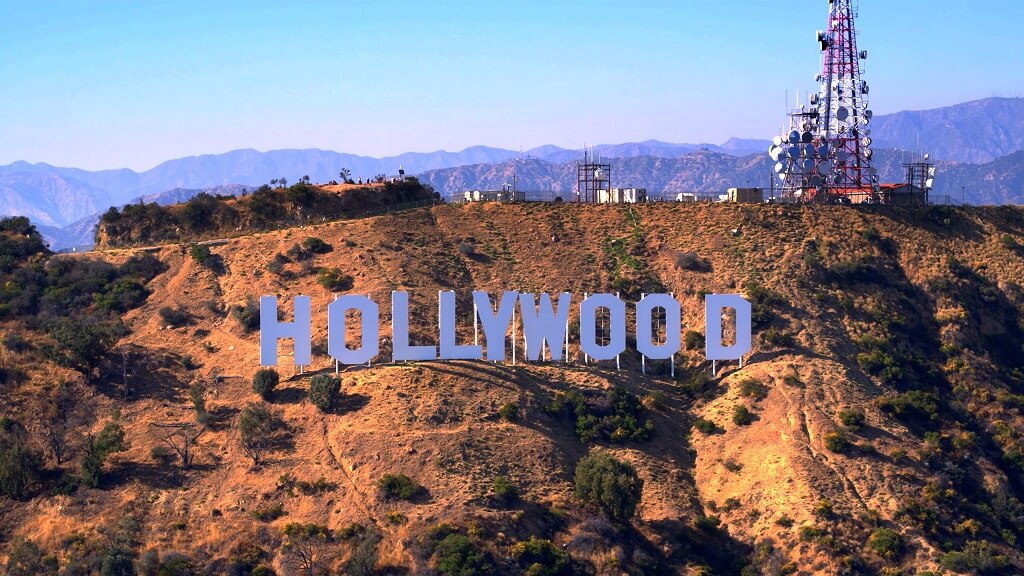
| State | Major Attractions | Type of Experience |
|---|---|---|
| California | Yosemite National Park, Los Angeles, San Francisco, Highway 1 | Nature, film, tech, coastal drives |
| Oregon | Crater Lake, Columbia River Gorge, Cannon Beach, Portland | Mountains, rivers, and city culture |
| Washington | Seattle Waterfront, Mount Rainier, Olympic National Park | Mountains, coffee culture, ferries |
| Alaska | Denali National Park, Inside Passage cruises, Anchorage | Wilderness, glaciers, wildlife |
| Hawaii | Volcanoes National Park, Waikiki, Maui beaches | Island resorts, hiking, and cultural heritage |
The West Coast invites travel built on distance and contrast.
A drive along the coast of California can move through deserts, cliffs, and cool forests in a single day.
The cruise trips around Alaska show vast ice fields and marine life, while Hawaii offers a warm island climate year-round.
Top Attractions on the East Coast
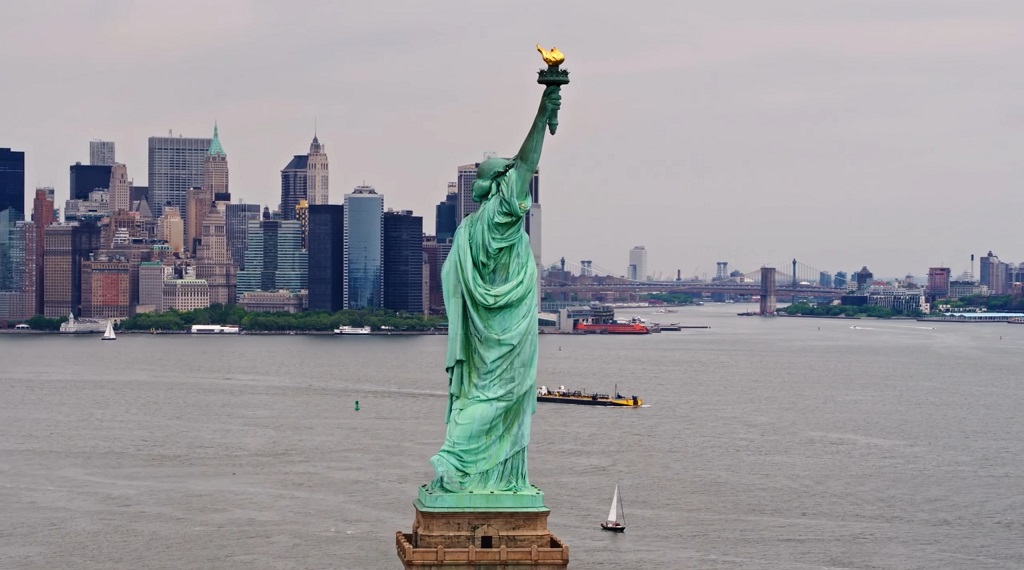
| State | Major Attractions | Type of Experience |
|---|---|---|
| Maine | Acadia National Park, Portland Head Light | Coastline, seafood, maritime heritage |
| Massachusetts | Boston Freedom Trail, Cape Cod | History, education, and beaches |
| New York | Statue of Liberty, Central Park, Niagara Falls | Culture, architecture, and entertainment |
| Virginia | Colonial Williamsburg, Shenandoah Valley | Early American history, nature |
| Florida | Miami Beach, the Everglades, and Orlando theme parks | Sunshine, wildlife, and entertainment |
The East Coast compresses centuries into short distances.
Visitors can start in Boston’s old brick streets, pass through New York skyscrapers, and reach southern beaches within hours.
Museums, monuments, and landmarks fill every state.
Frequently Asked Questions
Are There Volcanoes on The West Coast of The United States?
Yes. The West Coast contains many active and dormant volcanoes, mostly within the Cascade Range. Major volcanoes include Mount St. Helens, Mount Rainier, and Mount Adams in Washington, Mount Hood in Oregon, and Mount Shasta and Lassen Peak in California. Alaska also holds some of the most active volcanic systems in the country, such as Mount Redoubt and Mount Augustine. The region’s position along the Pacific Ring of Fire explains its high volcanic activity.
Which States on The East Coast Have the Warmest Weather?
The warmest states on the East Coast are Florida, Georgia, and South Carolina. Florida stays hot and humid for most of the year, with average summer temperatures near 82°F. Georgia and South Carolina have long warm seasons and mild winters, making them popular for tourism and retirement. Farther north, states like North Carolina and Virginia experience moderate warmth in summer but cooler winters.
Which States on The West Coast Have the Lowest Cost of Living?
Among the West Coast states, Oregon and Washington offer lower overall costs than California or Hawaii. Cities such as Spokane, Salem, and Eugene are known for affordable housing and moderate utility costs. Alaska varies widely, with coastal towns often more expensive than inland areas. California and Hawaii rank among the highest-cost states in the nation, mainly due to housing and transportation prices.
Which States on The West Coast Have the Most Earthquakes?
California experiences the highest number of earthquakes on the West Coast due to the San Andreas Fault and its connected fault systems. Alaska records the strongest quakes overall, including some of the most powerful in U.S. history. Washington and Oregon also face earthquake risk from the Cascadia Subduction Zone, a deep offshore fault capable of major seismic events.
What Are the Most Visited Cities on The West Coast?
The most visited West Coast cities include Los Angeles, San Francisco, San Diego, Seattle, Portland, Honolulu, and Anchorage. Los Angeles leads in entertainment and beaches. San Francisco attracts travelers for its architecture, technology centers, and landmarks such as the Golden Gate Bridge. Seattle draws visitors for its waterfront, markets, and mountain views. Honolulu serves as a major Pacific destination for international tourism.
What Are the Most Visited Cities on The East Coast?
The most visited East Coast cities include New York City, Washington DC, Boston, Miami, Orlando, and Philadelphia. New York City remains the top destination for culture, art, and business. Washington DC draws visitors for government landmarks and museums. Boston combines history and education, while Miami and Orlando dominate for sunshine, beaches, and theme parks.
Conclusion
The United States stands between two defining edges of land and water. Each coast holds a separate rhythm, but both complete the same story.
The West Coast states show expansion and innovation. The East Coast states preserve foundation and continuity.
Together they form the physical and cultural framework of the nation, balanced between the Pacific and the Atlantic, between progress and heritage.


